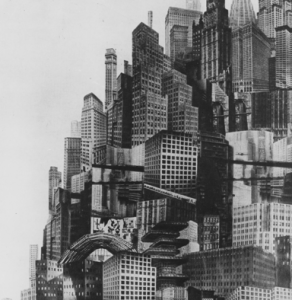Zagreb, Croatia, April 18 – 20, 2013
Deadline-CFP: 1 mars 2013
Call for Papers for the Panel:
Identities and the Cities: Urban Transformations, Transition and Change in Urban Image Construction
(As part of the Euroacademia International Conference ‘Identities and Identifications’, Zagreb, 18 – 20 April 2013)
Panel Organizers: Tihana Puc and Ivana Nakikj, IMT Institute for Advanced Studies, Lucca, Italy
 Elasticity of the label identity accommodates everything that does and does not surround us, thus finding its place in every discourse on making and re-making, invention and re-invention, destruction and construction. Every transition is synonymous with said processes, be it a tectonic change or a peaceful shift. As political systems and countries disintegrate and new ones rise, as they become more entangled in the global hyperspace, their skin changes in a manner of theatrical scenery change after each act, sometimes with discrete adaptation, sometimes with radical interventions. If the scenery is composed of streets, parks, roads, museums, monuments, shopping malls and buildings connected through the intricate network of the perpetual and cumulative actions of its inhabitants and the burden of their existence, if this setting is a city, every adaptation and intervention affects its multi-dimensional identities. However, can one speak of an identity of the urban space in the singular form?
Elasticity of the label identity accommodates everything that does and does not surround us, thus finding its place in every discourse on making and re-making, invention and re-invention, destruction and construction. Every transition is synonymous with said processes, be it a tectonic change or a peaceful shift. As political systems and countries disintegrate and new ones rise, as they become more entangled in the global hyperspace, their skin changes in a manner of theatrical scenery change after each act, sometimes with discrete adaptation, sometimes with radical interventions. If the scenery is composed of streets, parks, roads, museums, monuments, shopping malls and buildings connected through the intricate network of the perpetual and cumulative actions of its inhabitants and the burden of their existence, if this setting is a city, every adaptation and intervention affects its multi-dimensional identities. However, can one speak of an identity of the urban space in the singular form?
As the chaotic canvases of cities are being stretched over a framework of identity, its further exploration seems more than appropriate. Amidst the incredibly rapid urban growth crowding more than half of the world population in towns and cities, the questions are only going to keep multiplying. How are city identities made and re-made, used and abused, imagined and narrated, politicised and communicated, expressed and projected, imposed and marketed? And above all, how do they thrive within the dynamic interpolation of the nexus of East-West, Europe-Balkans, centre-periphery, urban – suburban, old and new. As out-dated as these dichotomies sound, in many places their daily life is far from over. As old cities became new capitals and new capitals struggle for more capital, the challenges of maintaining state-driven collective identities in the face of cultural fragmentation and diversification, coupled with consumer-attractiveness is turning them into urban palimpsest. This transformation is ever more complex in the cities of Central, Eastern and South-eastern Europe. In these last decades, during the period of socio-political and cultural deconstruction, the redefinitions of their urban space reflect the need to refashion, consolidate or even establish their new/old identities. Flooded with imported ‘non-places’, (not) dealing with the material legacy of memories of the recent past that seem unable to resolve, trying to accept or reject the rest of Europe in the race towards ‘Europeanization’, these cities adopt different approaches in their aim to resemble and at the same time, differ. Zagreb generously welcomed its marketing nickname “pocket size Vienna”, while regenerating itself with the mega Museum of Contemporary Art tailored up to an imagined ‘Western European’ standard. Skopje’s attention seeking project transformed the ‘open city of solidarity’ into a literal national identity construction site. The list goes on. Queuing to win the old continent’s capital of culture contest and eager to squeeze into the ever-enlarging itinerary of the consumerist Grand Tour, the only thing cities are not allowed to be, is invisible.
As the research on cultural identities of the city is becoming more abundant, this panel aims at adopting a wide-lens inter-disciplinary approach, while focusing on various transitional processes affecting identities in the urban context in its global-regional-national-local interplay.
Some example of topics may include (but are not limited to):
– Collective memory, identity and urban image construction
– Appropriation, instrumentalisation and functualisation of public space
– Contemporary nomadism and the city as a common denominator for collective identities
– Architecture as ‘politics with bricks and mortar’
– Is there a new rise of the city-state?
– Urban regeneration projects, landmark buildings and ‘starchitects’
– Non-places and (non)identity
– Immigrants and the cultural identity of cities
– City marketing and city branding in transition
– European capitals of culture and European identity
– Identity creation and the cultural offer of the city
– Urban cultural heritage as identity-anchor
– Creative Changes of the cities
– Art and industry in urban development
– Urban aesthetics
– Ugliness, kitsch and value in shaping contemporary urban spaces
– Post-communism and the shape of urban change
– East-West nexuses in urban development
In order to apply please send a 300 words abstract together with the details of affiliation to application@euroacademia.eu
See full details of the conference at:
http://euroacademia.eu/conference/identities-and-identifications/
URL de référence : http://arthist.net/archive/4722

Leave a Reply
You must be logged in to post a comment.